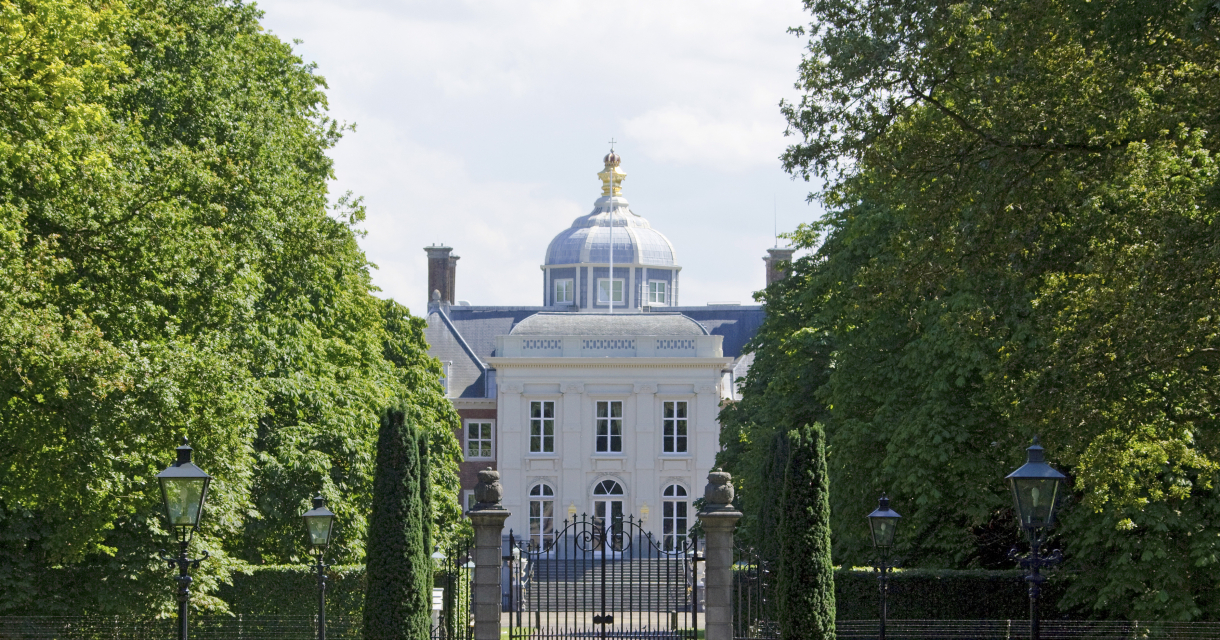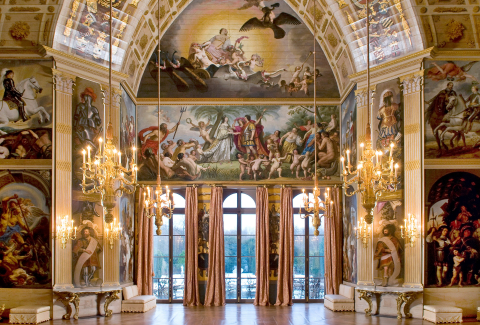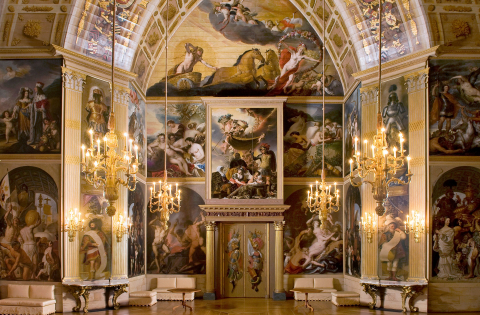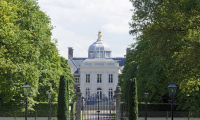


Huis ten Bosch Palace in The Hague has been the residential palace of the Dutch Royal Family since 1981. The palace is located in the Haagse Bos forest. The palace is one of three official residences of the Royal Family, the other two being Noordeinde Palace in The Hague and the Royal Palace in Amsterdam.
Royal palace
Huis ten Bosch Palace was until 2014 the home of Princess Beatrix. It was made available to then Queen Beatrix in 1981. In january 2019 King Willem-Alexander, Queen Máxima and their three daughters moved to the palace. Rumour has it that the palace pond is where Willem Alexander proposed to Maxima on the ice in 2001. His great-grandmother, Queen Wilhelmina, also skated here as a young Queen.
History
Huis ten Bosch Palace ('House in the Woods') was originally built as a summer residence for Amalia van Solms in 1645. She was very involved in the building process, supported by the palace's architect Pieter Post and advised by Constantijn Huygens, her husband's secretary. However, her husband stadtholder Prince Frederik Hendrik died during construction and she had the palace changed into a mausoleum, in his memory.
Design
Huis ten Bosch has a compact, centralised design based on Italian models. Two suites of apartments are balanced symmetrically around a central hall, the Oranjezaal (Orange Hall), which rises through three floors and is crowned by an octagonal cupola. The decorative scheme of the Oranjezaal was coordinated and partly executed by Jacob van Campen.
On the occasion of the marriage of Prince William IV to Princess Anne of England in 1733, two side wings, designed by Daniel Marot, were added to the main building. In 1899 the palace hosted the First World Peace Conference, an initiative of Tsar Nicholas II.
Orange Hall
The Oranjezaal in Huis ten Bosch Palace houses a unique collection of paintings from the Golden Age. In the years 1648-1652 by commission from Amalia van Soms and under the direction of the architect and painter Jacob van Campen, twelve artists worked on tens of canvasses, panels and dome paintings. All of this was in homage to her husband stadtholder Frederik Hendrik, who had died shortly beforehand. The iconographic programme of the interior paintings, connected by these thoughts, is unsurpassed in stature, quality and theme in the Netherlands.The Oranjezaal is now also available to view in 3D on Google Street View.
Restoration
The palace was not used by the royal family during the Second World War. In 1943 the Germans were going to pull the palace down; however, this plan was frustrated at the last moment. After the war the palace fell into disrepair. Princess Juliana stayed there occasionally when she had to be in The Hague on government business. After a major restoration in 1977, Queen Beatrix choose Huis ten Bosch Palace as her residence. Since 1980 The Hague has been home to the royal family once again.
Primary function
The primary function of the palace is to act as the royal residence. A wing of the palace, however, has been fitted out as a guest accommodation and is suitable for representative purposes. Dutch medallists at Olympic Games or the new government where, true to tradition, presented with the former Queen on the steps of Huis ten Bosch Palace.
Due to the fact that the palace functions as a residence, it can't be visited by the public. The best place to take a look at it is from the Haagse Bos forest. You can make the 3-kilometre walk from the city centre through the forest. Peek through the gates to see the classical, Italian-influenced architecture and the octagonal cupola on the roof.
Haagse Bos
Huis ten Bosch Palace is located in the Haagse Bos forest. Haagse Bos is literally and figuratively the green gateway to The Hague. The forest consists of an extensive and centuries-old green landscape and is inextricably linked with the rich history of The Hague. Haagse Bos makes an essential contribution to the green character of The Hague. The area is approximately 100 hectares in size and runs from Malieveld to the municipality of Wassenaar. It is the perfect place for running, picnicking beside the water or walking between the beautiful old trees. Haagse Bos is a green oasis in a big city.

